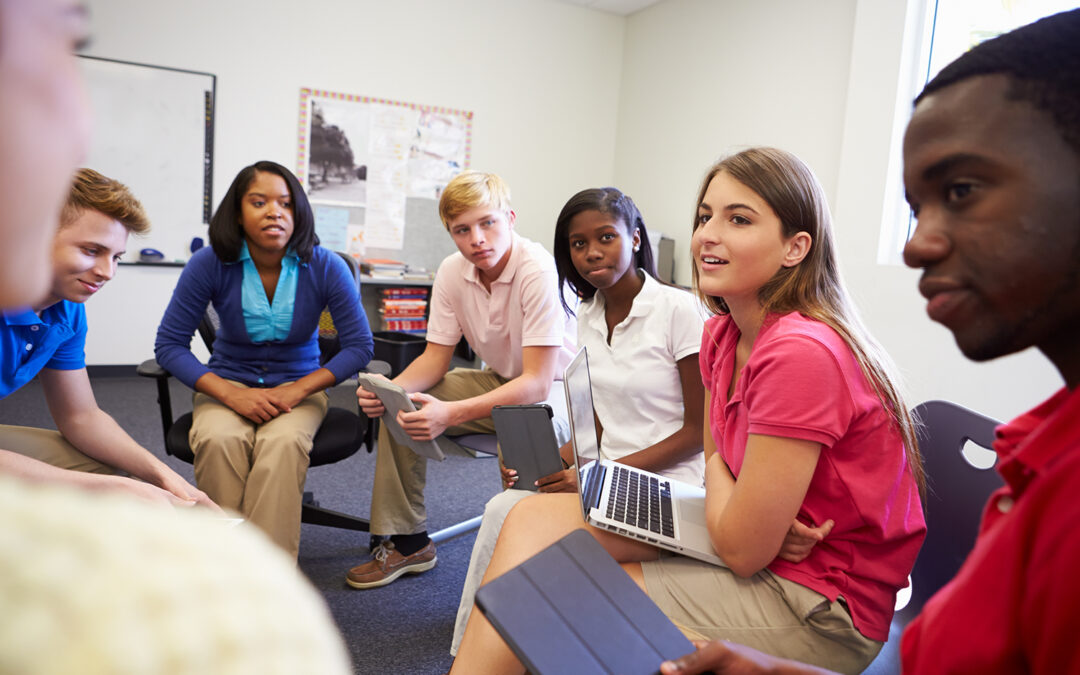Educators have the unique responsibility of delivering content as well as helping students to move in the direction of personal growth and development. This movement happens best when there is a common frame of reference or starting point for working toward the destination.
According to the Collaborative for Academic, Social, and Emotional Learning, the practice of social-emotional learning (SEL) has five different competencies which include self-awareness, self-management, social awareness, relationship skills, and responsible decisionmaking. These SEL competencies are how educators help children process their environment and become better students and humans. SEL cannot take place without a culturally relevant start. It’s important that we seek to understand students culturally before helping them learn new social skills and behaviors.
Culture is central to how we think, live, and see the world as humans. The values and beliefs around how one is reared, the customs shared, holidays celebrated, foods eaten, and language used are all a part of one’s cultural socialization. As culturally responsive educators, our goal is to tap into this identity causing students to feel engaged with a sense of belonging. It’s an uphill climb to help a student toward self-awareness without an understanding of the cultural background that they bring to school each day.
The competency of self-management works in a very similar way. For example, if one grows up in a very patriarchal-centered home. they will have a different perspective on manhood as well as what expressions of masculinity may look like. With that, some children may act out, suppress emotion, or regulate self-control differently from others. Educators engaging in emotion-talk with students can encounter obvious barriers when not taking the individual’s cultural background into account.
When teaching SEL, we also have to recognize that children have been taught, some intentionally and some via inference, to be aware of how the social world perceives them. Educators must be mindful that children from racial “minority” groups may not understand diversity and multiculturalism as the language of inclusivity but instead see a world of combatting generalizations and stereotypes. If the educator is not aware of the potential skepticism felt by a disadvantaged student, the learning cannot move forward because it’s not a safe space for one to share their reality. Our goals in SEL are to help students feel connected to the teaching and learning experience. In order for this to happen, students have to feel that they can drop their guard to reflect on different ways of being human. Building relationships is key to establishing trust and serves as an observable platform for teaching young people how to positively interact with others.
Our social world is not without bias, and neither are our classrooms. Work around decisionmaking as a core competency can be life-changing when taught in the perceivably neutral classrooms of a school. However, neutrality is subjective, and it’s an educator’s consideration of the cultural, environmental, historical, and socio-political experiences of students that creates the optimal starting point for SEL. The provision of realistic scenarios for consequential thinking and analysis can only come from genuine engagement and understanding of the cultural lives of the students entrusted to our care. SEL work is typically rooted in helping students understand how to respond appropriately to “mainstream” ideals. However, I argue that it’s equally, if not more, important to teach mainstream educators to learn and become aware of new or unfamiliar cultural ideas.
Culture is an undeniable part of everything we do as humans, and SEL is a major platform for how we knowingly, and unknowingly, share values and norms with students. The work inside of schools has to become a fusion of both. Every day, students enter our space with values and beliefs that may cause them to see the world uniquely. This cultural knowledge shouldn’t be dismissed just because it feels unfamiliar to us. Educators need social-emotional learning, too. It’s tough to do this work if one hasn’t explored their own cultural identity and biases. As educators, we have to predetermine that we will not allow cultural differences to be perceived as human deficits. An educator’s SEL programming will be completely ineffective unless it starts with the cultural uniqueness that makes us different, yet in the pursuit of a full humanity, makes us equally the same.


Recent Comments